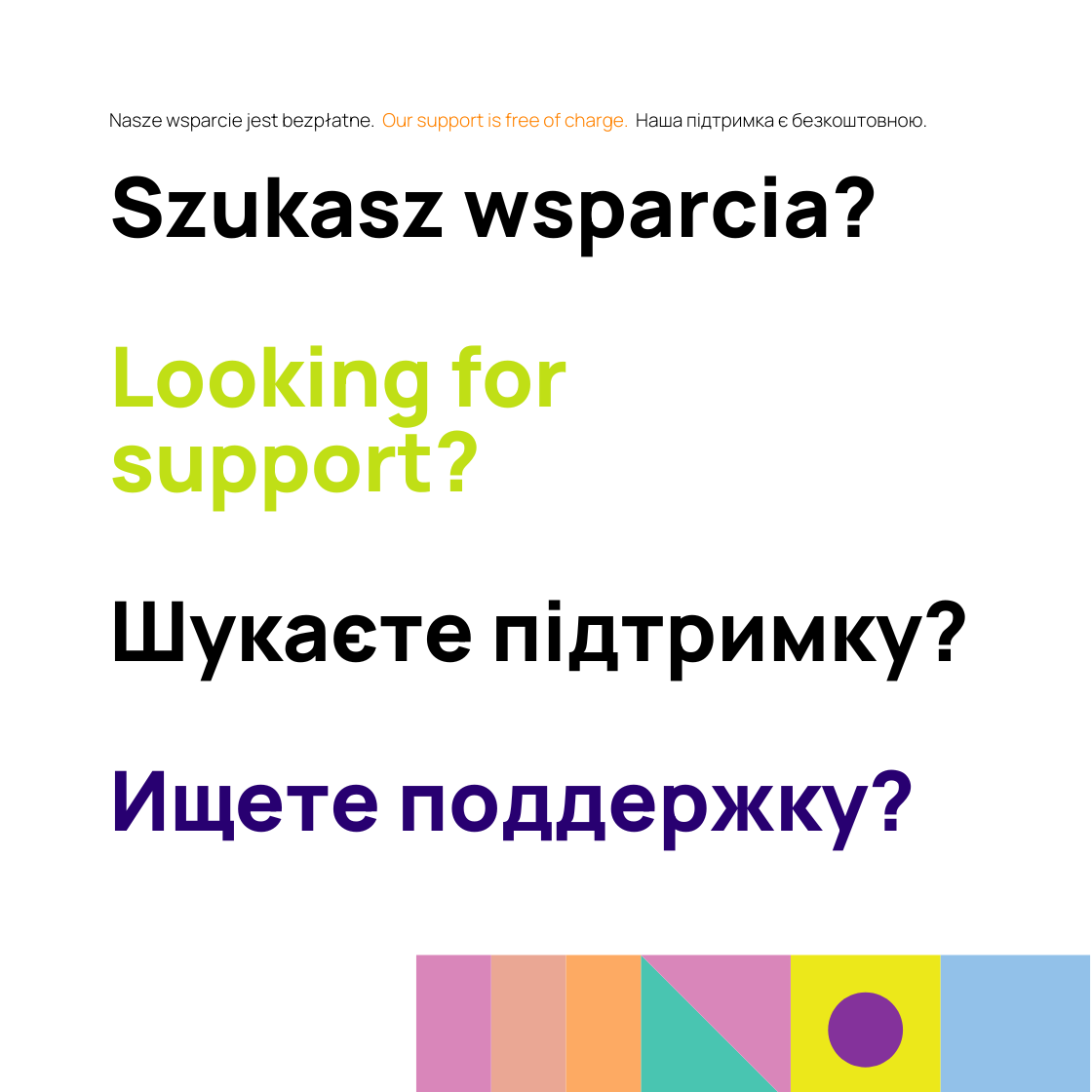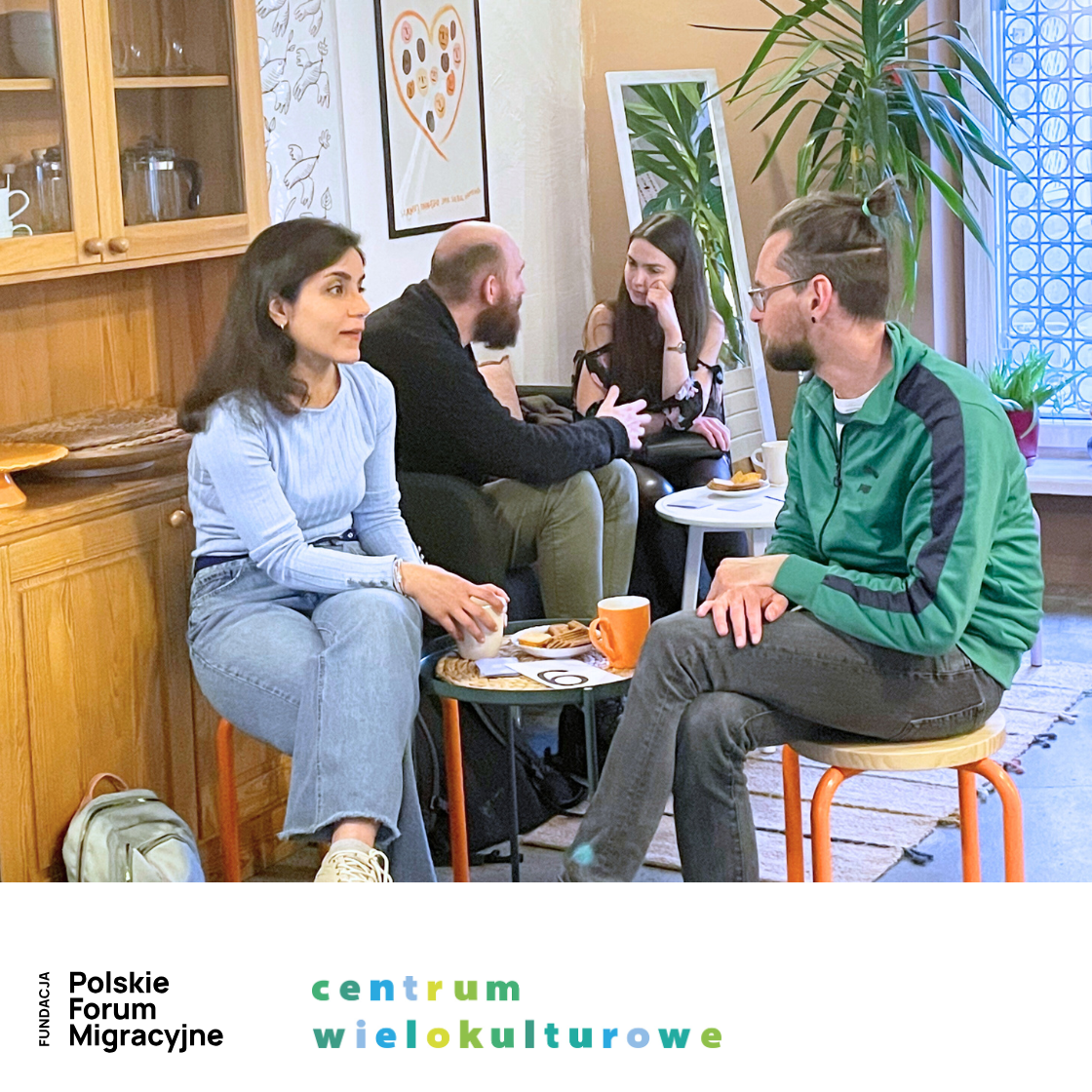Definition and organisation of guarded detention centres - Kornelia Turbiłowicz article from the publication „Everyone around is suffering".
What are guarded detention centres used for?
A guarded detention centre (GDC) for foreigners in Poland is a facility for migrants deprived of their liberty under migration regulations – either due to a pending deportation procedure or a procedure for granting international protection. Detention is intended to make these processes run efficiently.
We should explain here what they entail. The return procedure, i.e. deportation procedure, is an administrative procedure aimed at obliging a foreigner to leave Poland. It is conducted by the Border Guard Commander in a situation where during a check performed on a foreigner it is found that one of the conditions set out in Art. 302 of the Foreigners Act (FA) applies with respect to that foreigner. These include, among others: illegal stay, illegal work, absence of any travel document authorising entry and stay in Poland.
With respect to persons obliged to return and held in a guarded centre, the Border Guard takes measures to compulsorily execute the deportation decision. In specific cases, the return procedure may conclude in waiving the obligation to leave Poland, i.e. in the issue to the foreigner of a permit to stay in the country for humanitarian reasons or a permit for tolerated stay [1].
Whereas the international protection procedure is an administrative procedure conducted at the request of a person who has declared to the Border Guard their intent to apply for international protection due to being in danger in their country of origin. It may conclude in the granting of refugee status or subsidiary protection, or in the refusal to grant either of these forms of protection [the legal basis applicable to both procedures is discussed on page 14 – editor’s note].
Organisation of guarded detention centres
In structural terms, the centres are subordinate to the locally competent Commander of the post or branch of the Border Guard which runs the respective facility and makes the binding decisions regarding the persons held there.
Guarded detention centres are penitentiary in nature. This means that the person sent there cannot individually decide whether they want to stay there or whether they want to leave. Placement in a guarded centre follows a decision of the locally competent district criminal court. Whereas release is at the discretion of the court or the Border Guard Commander in charge of the centre or, exceptionally, the Head of the Office for Foreigners.
A migrant may end up in a guarded centre not as a result of a crime or offence. This is because by definition it is administrative detention and is not intended to punish a person for their conduct.
However, guarded detention centres are not divided according to the administrative procedures pending against foreigners. The law does not provide for any other differentiation either, e.g. for the conditions that should be ensured in each different case.
In Poland, guarded centres for foreigners are divided into:
- Men’s centres – for single adult men;
- Family centres – for families, also with children, for single adult women and for underage foreigners without a legal guardian in Poland (there is a special part of the centre designated to them).
There are currently six facilities: in Lesznowola, Biała Podlaska, Kętrzyn, Przemyśl, Białystok and Krosno Odrzańskie. The sites are protected by high fences with barbed wire.
Daily life in GDCs
Staying in a guarded centre entails a significant restriction of freedom and contact with the outside world. What does this mean in practice? A person in detention needs to follow a strict daily schedule and regulations. They are also deprived of some private belongings e.g. smartphones with a camera and Internet access, which are deposited in a special room; they have limited computer and network use; can go outside to get some fresh air, but only within the facility. Their ability to use their money is also limited – it is secured towards the costs connected to their forced removal from Poland, including the costs of their stay in the guarded centre. Most people in the GDC pay for their stay, although this depends on the individual legal situation.
At the same time, migrants in detention are not allowed to engage in gainful employment – they remain under constant supervision of Border Guard officers. Single people are usually placed in a room with strangers. The human right to privacy and to family life is significantly restricted.
In each guarded centre, foreigners are provided with all-day board and medical care. Moreover, children should have access to basic learning, recreational and sporting activities [2]. Despite this, the Ombudsman has signalled that the constitutional right to education of migrant children in guarded centres is not respected [3]. Each facility should have, among other things, a library, rooms for cultural and educational activities and sports activities, a sports field and a playground (in the place where children are staying), as well as a solitary room and isolation room for sick persons [4]. People staying at a GDC have the right to engage in religious practices and to have on-site or remote online visits with relatives, but this is limited to 90 minutes per day [5].
Currently, the centre provides no less than 4 m² of room space per person. However, if there are more people in the facility, this space may be reduced to 2 m², but for a maximum of 12 months [6]. This represents a lower standard than in prisons (3 m² per person). The practice is contrary to international standards and may bear the hallmarks of torture and other inhuman treatment [7].
Jail
A jail for foreigners may also operate within a guarded centre8 . One is currently located at the Guarded Centre for Foreigners in Przemyśl. By design, it is only meant for people who pose the risk of not complying with the rules of the facility. They can only be placed there by an order of the court, which assesses whether the grounds to do so exist. Therefore, the jail should only be used when it would be insufficient to detain a person in a guarded centre.
However, the Ombudsman has reported cases where a jail was used instead of a guarded centre [8]. The Ombudsman also reports that the jails do not meet international standards and that their regime resembles closed prisons.
The jail is governed by a strict regime and there is constant surveillance of the people in custody. A special walking area is designated, which is only accessible at certain times. Detainees have no contact with other people from the centre, unless they obtain special permission. They spend most of the day locked in their rooms. They also have to ask an officer to take them to the toilet10. The maximum time limits for detention in jail are the same as those applicable to persons placed in guarded centres [this is discussed later in this chapter – editor’s note].
>> Read the full report <<
Footnotes
- Article 348 and 351 of the Foreigners Act (FA)Back
- Article 416(2) FABack
- RPO, Do strzeżonych ośrodków nie powinny trafiać m.in. rodziny migrantów z dziećmi. Marcin Wiącek pisze do polskich sądów, text available at: https://bip.brpo.gov.pl/pl/content/rpo-sady-migranci-strze- zone-osrodki-rodziny-dzieci, accessed: 23.11.2023Back
- §3 Regulation of the Minister of the Interior on Guarded Detention Centres and Jails for Foreigners of 24 April 2015 (consolidated text, Journal of Laws of 2023, item 719), hereinafter: “GDC Regulation”).Back
- Ibid, §21(1).Back
- Ibid, §11(1) aBack
- Krajowy Mechanizm Prewencji Tortur, Sytuacja cudzoziemców w ośrodkach strzeżonych w dobie kryzysu na granicy Polski i Białorusi. Raport z wizytacji Krajowego Mechanizmu Prewencji Tortur, 2022, available at: https://bip.brpo.gov.pl/sites/default/files/2022-06/Raport%20KMPT%20-Sytuacja%20cudzoziemc%C3%B3w%20w%20o%C5%9Brodkach%20strze%C5%BConych%20w%20dobie%20kryzysu%20na%20 granicy%20Polski%20i%20Bia%C5%82orusi.pdf, p. 64, accessed: 24.11.2023 and Stowarzyszenie Interwencji Prawnej, Wsparcie zamiast przemocy – czyli alternatywa dla strzeżonych ośrodków dla cudzoziemców, 2023 , available at: https://interwencjaprawna.pl/wp-content/uploads/2023/05/wsparcie-zamiast-przemocy-raport-SIP.pdf, accessed: 24.11.2023 r., p. 14.Back
- Cudzoziemcy zbyt łatwo trafiają do aresztu – zamiast do ośrodka. Odpowiedź MSWiA na wystąpienie RPO, 2023, text available at: https://bip.brpo.gov.pl/pl/content/rpo-cudzoziemcy-areszty-mswia-od- powiedz, accessed: 24.11.2023.Back



